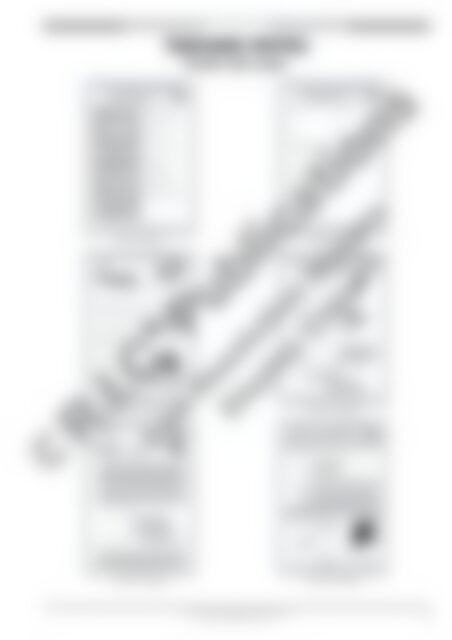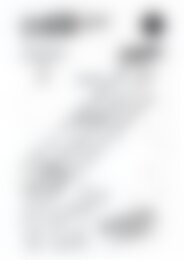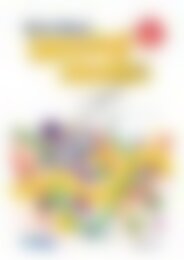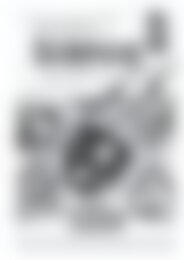RIC-20786_Teaching_Strategies_for_Writing_BkA_word_choices
You also want an ePaper? Increase the reach of your titles
YUMPU automatically turns print PDFs into web optimized ePapers that Google loves.
TEACHING STRATEGIES FOR WRITING (Book A)<br />
www.ricpublications.com.au<br />
TEACHING STRATEGIES FOR WRITING (Book A)<br />
www.ricpublications.com.au<br />
TEACHING STRATEGIES FOR WRITING (Book A)<br />
www.ricpublications.com.au<br />
978-1-925698-35-0<br />
978-1-925698-35-0<br />
978-1-925698-35-0<br />
TEACHING STRATEGIES FOR WRITING (Book A)<br />
www.ricpublications.com.au<br />
TEACHING STRATEGIES FOR WRITING (Book A)<br />
www.ricpublications.com.au<br />
TEACHING STRATEGIES FOR WRITING (Book A)<br />
www.ricpublications.com.au<br />
TEACHER NOTES<br />
Sample open pages<br />
TEACHER INFORMATION<br />
TEACHER INFORMATION<br />
UNIT 2<br />
PRONOUNS, CONFUSING PRONOUNS<br />
(ME/I), WHICH PRONOUN?<br />
UNIT 2<br />
PRONOUNS, CONFUSING PRONOUNS<br />
(ME/I), WHICH PRONOUN?<br />
Focus<br />
Word <strong>choices</strong> – pronouns, confusing pronouns (me, I), which<br />
pronoun?<br />
Progression<br />
Recognise<br />
Students will recognise a pronoun from modelled examples.<br />
Choose<br />
Students will choose appropriate pronouns from given examples,<br />
with teacher support.<br />
Use<br />
Students will choose and use correct and appropriate pronouns in<br />
supplied and self-written sentences.<br />
Definition of terms<br />
Pronouns are <strong>word</strong>s used to replace nouns.<br />
A possessive pronoun replaces a noun identifying ownership by<br />
the person or thing to which it refers.<br />
The subject of a verb is the person or thing ‘doing’ the action.<br />
The object of a verb is the person or thing affected by the action.<br />
Introduction<br />
Good writers improve their writing by replacing nouns with<br />
appropriate and correct pronouns.<br />
The use of pronouns prevents constant repetition of a noun,<br />
making text more manageable and fluid.<br />
It is important <strong>for</strong> students to know the correct pronouns to use in<br />
the context of a sentence.<br />
Possessive pronouns<br />
Possessive pronouns are used to replace the name of a person or<br />
thing; e.g. That book belongs to him (John), it is his.<br />
NOTE: The <strong>word</strong>s ‘his’ and ‘its’ can be used as a possessive<br />
determiner as well as a possessive pronoun; e.g. his book, its tail<br />
Relative pronouns<br />
The relative pronouns ‘who’,‘which’ and ‘that’ are used to refer to<br />
nouns and pronouns; e.g., the boy who, he who, the team that, the<br />
book which.<br />
The correct use of ‘who’ <strong>for</strong> people is more critical. Although<br />
‘which’ and ‘that’ can both be used in many contexts, ‘which’ should<br />
strictly be used to refer to a particular desk (telling which one);<br />
e.g. the desk which is by the door. The relative pronoun ‘that’ has<br />
a broader reference and doesn’t refer to one desk; e.g. the desks<br />
that are by the door.<br />
LESSON NOTES AND PLANS<br />
Introduction<br />
• Discuss the text title with students.<br />
• What sort of text do they think it will be?<br />
• Why do they think this? What are some of the features of a recount?<br />
• Introduce the term ‘pronoun’ and explain that <strong>word</strong>s replacing nouns<br />
are pronouns. Use examples from the classroom; e.g. Tran = he,<br />
Mary = she, the board = it, the tallest boy in the class = he.<br />
• Read the text with or to the class.<br />
• Identify some of the pronouns used in the text to replace people,<br />
places and things.<br />
• Identify single and plural pronouns from the text.<br />
Pronouns – Page 11<br />
• Read and discuss the definition at the top of the page.<br />
• Explain that good writers use pronouns instead of repeating the<br />
same nouns.<br />
• Explain why it is important to use the correct pronoun <strong>for</strong> the noun it<br />
replaces.<br />
• Work through the activities with the class as a whole, ensuring they<br />
understand what is required of them.<br />
• Work with those requiring additional assistance while the remainder<br />
of the class work independently on the activities.<br />
Using pronouns – Page 12<br />
• Discuss the examples at the top of the page.<br />
• Work through the activities with the class as a whole, ensuring they<br />
understand what is required of them.<br />
• Work with those requiring additional assistance while the remainder<br />
of the class work independently on the activities.<br />
• Provide opportunities <strong>for</strong> the class to share their answers to<br />
Question 2.<br />
Which pronoun – who or that? me or I? – Page 13<br />
• Questions 1 and 2 focus on the relative pronouns ‘who’ and ‘that’.<br />
• Explain that ‘who’ must be used <strong>for</strong> people.<br />
NOTE: ‘That’ and ‘which’ refer to things, places and can both be used<br />
<strong>for</strong> groups of people; e.g. the team which, a class that, (but ‘the<br />
members of the team who’).<br />
• Encourage students to read the sentences aloud to help them to<br />
choose the correct pronouns. Encourage them to ask the question<br />
‘Who did it?’; if the answer is ‘I’, then ‘I’ is correct; if not, it should be<br />
‘me’.<br />
ANSWERS<br />
Pronouns – Page 11<br />
1. (a) It<br />
(b) He<br />
(c) She<br />
2. (a) they<br />
(b) it<br />
(c) she<br />
3. (a) her<br />
(b) them<br />
(c) me<br />
4. (a) you<br />
(b) me, her, him, us<br />
(c) they<br />
Using pronouns – Page 12<br />
1. (a) No because the nouns are repeated and not replaced by<br />
pronouns<br />
(b) The girl and boy rode bikes to the zoo. They left them at the<br />
gate. The girl went to see the bears. She liked them. They were<br />
brown. The boy went to the penguins. He watched them playing<br />
in the water.<br />
2. (a) mine<br />
(b) ours<br />
(c) yours<br />
(d) theirs<br />
3. Teacher check<br />
Which pronoun – who or that? me or I?— Page 13<br />
1. (a) that<br />
(b) who<br />
2. Teacher check<br />
3. (a) me<br />
(b) I<br />
(c) me<br />
4. (a) ✗<br />
(b) ✓<br />
ASSESSMENT ANSWERS<br />
Assessment activity – Page 27<br />
1. (a) it<br />
(b) he<br />
2. (a) it<br />
(b) them<br />
3. (a) who<br />
(b) that<br />
4. (a) me<br />
(b) I<br />
5. The children went to the zoo. They enjoyed seeing the animals. My<br />
favourite was the giraffe. It was very tall.<br />
Class record sheet – Page vi<br />
ASSESSMENT WRITING<br />
• Paragraph topic – At the zoo<br />
• Focus: Word <strong>choices</strong> – pronouns<br />
Self-evaluation – Page xiii<br />
8 978-1-925698-35-0<br />
9<br />
Teacher page 1 Teacher page 2<br />
UNIT 2<br />
ZOO FRIENDS<br />
UNIT 2<br />
PRONOUNS<br />
A pronoun is used to replace a noun.<br />
For example:‘birds’ – they; ‘a frog’ – it<br />
1. Circle the pronouns in the sentences.<br />
(a) Sally saw a green snake. It was sleeping.<br />
Sally, Mike and Ellie went to the zoo.<br />
They all saw their favourite animals.<br />
Sally liked snakes. She saw a big green<br />
snake. It was sleeping. She saw two brown<br />
snakes. They were lying in the warm sun. One<br />
snake slid over to the glass. It flicked its<br />
tongue in and out. Sally thought it was<br />
smiling at her. She liked them all.<br />
The monkeys were Mike’s favourites.<br />
One monkey was eating melon. He<br />
had melon juice running down his<br />
chin. Two cheeky monkeys played a<br />
trick on him. They crept up behind<br />
him and poured water on him.<br />
The melon monkey jumped up and<br />
chased them. He was angry. Mike<br />
laughed so hard he cried.<br />
Ellie went straight to the elephants.<br />
There was a mother elephant. She<br />
is called a cow. There was a father<br />
elephant. He is called a bull. And<br />
there was a baby elephant. It is<br />
called a calf. The mother was feeding<br />
apples to her calf. She picked them<br />
up in her trunk <strong>for</strong> the calf to eat.<br />
Ellie loved the whole family. She<br />
could watch them <strong>for</strong> hours.<br />
(b) One monkey was eating. He was eating a melon.<br />
(c) There was a mother elephant. She is called a cow.<br />
2. Circle the correct pronoun in each sentence.<br />
(a) My favourite animals are cats and it they are loving.<br />
(b) She has a pet fish and she likes looking at she it .<br />
(c) The girl went to see the birds and he she wanted one.<br />
3. Chose a pronoun to write in each space.<br />
them me her<br />
snake over to (a) Sally saw the slide .<br />
(b) I like monkeys but Tom doesn’t like .<br />
(c) Please come to the zoo with .<br />
4. Write a correct pronoun in the space.<br />
(a) I think<br />
are my best friend.<br />
(b) Mum and Dad took<br />
to the zoo.<br />
(c) The animals played and<br />
had fun.<br />
10 978-1-925698-35-0<br />
11<br />
Activity page 1 Activity page 2<br />
UNIT 2<br />
USING PRONOUNS<br />
The girl and boy rode bikes to the zoo. The girl and boy left the<br />
bikes at the gate. The girl went to see the bears. The girl liked<br />
the bears. The bears were brown. The boy went to the<br />
penguins. The boy watched the penguins playing in the water.<br />
1. Change all the underlined nouns to pronouns. Write the new text.<br />
UNIT 2<br />
WHICH PRONOUN – WHO OR THAT? ME OR I?<br />
The pronoun ‘who’ is used <strong>for</strong> people and ‘that’ <strong>for</strong> other things.<br />
For example: The boy who saw the snake that was in the zoo.<br />
1. Add ‘who’ or ‘that’.<br />
(a) The monkeys<br />
were playing ran away.<br />
(b) The boys<br />
were watching them laughed.<br />
2. Finish the sentences using ‘who’ or ‘that’.<br />
(a) The children<br />
(b) The animals<br />
2. Choose the correct pronoun.<br />
mine yours ours theirs<br />
is my is .<br />
(a) That book. It<br />
(b) Those are our toys. They are .<br />
(c) There is your cat. It is .<br />
Use ‘I’ when I’m the one doing something. … I am talking.<br />
Use ‘me’ if I’m NOT the one doing something … Mum’s talking to me.<br />
3. Write ‘I’ or ‘me’ in the space.<br />
(a) The keeper gave<br />
some<br />
food <strong>for</strong> the apes.<br />
(d) They own the bikes. The bikes are .<br />
(b)<br />
threw it into the cage.<br />
3. Write your own sentence using ‘his’ or ‘hers’.<br />
(c) My friend wanted to share the food with .<br />
4. Is the pronoun correct? Put a tick or cross in the box.<br />
(a) John saw I at the zoo.<br />
(b) I loved the elephants.<br />
12 978-1-925698-35-0<br />
13<br />
Activity page 3 Activity page 4<br />
TEACHING STRATEGIES FOR WRITING (Book A)<br />
www.ricpublications.com.au<br />
v


















